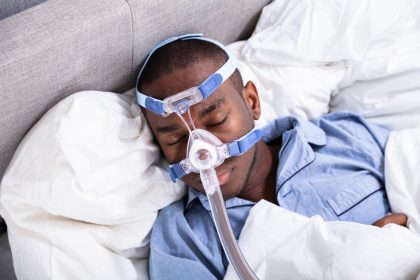When someone develops a tremor or experiences slowed movements, Parkinson’s disease often comes to mind first. However, several neurological conditions present with remarkably similar symptoms, leading to potential misdiagnosis and delayed proper treatment. Understanding these Parkinson’s mimics is crucial for both patients and healthcare providers seeking accurate diagnosis and appropriate care.
The challenge of diagnosing Parkinson’s disease
Parkinson‘s disease affects nearly one million Americans, with approximately 60,000 new diagnoses each year. Yet studies suggest that up to 25% of patients diagnosed with Parkinson’s may actually have a different condition. This diagnostic challenge stems from several factors:
No definitive laboratory test exists to confirm Parkinson’s disease during life. Diagnosis relies primarily on clinical examination and medical history.
Even experienced neurologists sometimes struggle to differentiate between Parkinson’s and its mimics based solely on clinical presentation.
Let’s explore the most common conditions mistaken for Parkinson’s disease and how they differ.
1. Essential tremor
Essential tremor represents the most common movement disorder and frequently leads to Parkinson’s misdiagnosis. Key differences include:
The tremor in essential tremor typically occurs during voluntary movement (action tremor), whereas Parkinson’s tremor is most noticeable at rest.
Essential tremor often affects both sides of the body symmetrically, while Parkinson’s usually begins on one side.
Essential tremor commonly involves the head and voice, which are less frequently affected in early Parkinson’s.
People with essential tremor rarely develop the stooped posture, shuffling gait, or facial masking characteristic of Parkinson’s.
Alcohol often temporarily improves essential tremor but has little effect on Parkinson’s symptoms.
Family history plays a stronger role in essential tremor, with about 50% of cases showing familial patterns.
2. Drug-induced parkinsonism
Certain medications can produce symptoms nearly identical to Parkinson’s disease. This medication-induced condition:
Develops after starting or increasing doses of certain drugs, particularly antipsychotics, antiemetics, and some calcium channel blockers.
Usually affects both sides of the body equally, unlike the asymmetric onset typical in Parkinson’s.
Often improves substantially or resolves completely after discontinuing the causative medication, though recovery may take months.
May not respond to traditional Parkinson’s medications like levodopa.
Common culprit medications include haloperidol, metoclopramide, risperidone, and flunarizine.
3. Vascular parkinsonism
Sometimes called “lower body parkinsonism,” this condition results from small strokes in brain regions controlling movement. Distinguishing features include:
More prominent symptoms in the lower body, with walking difficulties and balance problems exceeding upper limb involvement.
Development of symptoms that may appear suddenly or in a stepwise pattern, unlike the gradual progression seen in Parkinson’s.
Brain imaging showing evidence of multiple small strokes or white matter changes.
Less responsive to traditional Parkinson’s medications.
Association with vascular risk factors like high blood pressure, diabetes, and smoking.
Absence of classic resting tremor in many cases.
4. Multiple system atrophy (MSA)
MSA represents a progressive neurodegenerative disorder that causes parkinsonism plus additional symptoms. Key differences from Parkinson’s include:
More rapid disease progression, with significant disability typically occurring within 5-10 years of symptom onset.
Early and severe autonomic dysfunction, including orthostatic hypotension, urinary incontinence, and erectile dysfunction.
Poor response to levodopa therapy compared to true Parkinson’s disease.
Development of distinctive voice changes (stridor) and breathing disturbances during sleep.
Cerebellar symptoms like incoordination and balance problems in some patients.
5. Progressive supranuclear palsy (PSP)
PSP is a rare brain disorder that can initially resemble Parkinson’s disease. Distinctive features include:
Early and severe balance problems with frequent backward falls.
Distinctive eye movement abnormalities, particularly difficulty looking down.
A characteristic surprised or staring facial expression.
Minimal or absent tremor in most cases.
Speech and swallowing difficulties developing earlier than in typical Parkinson’s.
A more rapid disease course than Parkinson’s, with significant disability within 3-5 years.
Limited response to Parkinson’s medications.
6. Corticobasal degeneration (CBD)
CBD represents a rare, progressive neurological disorder affecting movement and cognition. Distinguishing characteristics include:
Marked asymmetry of symptoms, often affecting just one limb initially.
Development of unusual movement phenomena such as “alien limb” syndrome, where one hand seems to move independently.
Difficulty performing complex motor tasks with the affected limb.
Development of language difficulties and cognitive changes relatively early.
Muscle stiffness and contractures in the affected limb.
Poor response to Parkinson’s medications.
7. Lewy body dementia (LBD)
While related to Parkinson’s disease, LBD has a different symptom progression and treatment approach. Key differences include:
Cognitive symptoms appearing before or simultaneously with movement problems.
Visual hallucinations occurring early in the disease course.
Pronounced fluctuations in alertness and cognitive function from day to day.
Extreme sensitivity to antipsychotic medications.
Sleep disturbances, particularly acting out dreams during REM sleep.
Autonomic symptoms like blood pressure fluctuations, constipation, and urinary issues.
8. Normal pressure hydrocephalus (NPH)
NPH creates a triad of symptoms that can resemble Parkinson’s disease:
A distinctive walking difficulty described as a magnetic or stuck gait, as if the feet are glued to the floor.
Urinary urgency or incontinence developing early in the disease.
Cognitive changes, particularly slowed thinking and memory problems.
Potential improvement after removal of cerebrospinal fluid via lumbar puncture.
Neuroimaging showing enlarged ventricles in the brain without significant tissue loss.
Absence of the classic resting tremor typical in Parkinson’s disease.
9. Wilson’s disease
This rare inherited disorder causes copper accumulation in the liver, brain, and other tissues. When it affects the brain, it can produce Parkinson-like symptoms:
Typically affects younger individuals, often beginning in adolescence or early adulthood.
May include liver abnormalities detectable on blood tests.
Often produces distinctive eye findings (Kayser-Fleischer rings).
Can cause unique movement disorders beyond typical parkinsonism, including wing-beating tremor.
Laboratory tests showing abnormal copper metabolism confirm the diagnosis.
Responds to copper-chelating medications rather than Parkinson’s treatments.
10. Psychogenic movement disorders
Psychological factors can produce movement symptoms that resemble neurological conditions like Parkinson’s:
Often have a sudden onset, sometimes following psychological stress.
May show inconsistent patterns throughout the day or during examination.
Sometimes include unusual movement patterns that don’t fit established neurological conditions.
May fluctuate with attention or distraction.
Often affect younger individuals without other neurological signs.
Improvement may occur with psychological interventions.
Importance of accurate diagnosis
Distinguishing Parkinson’s disease from its mimics holds tremendous importance for several reasons:
Treatment approaches differ significantly between these conditions. Some respond to conventional Parkinson’s medications, while others require completely different interventions.
Prognosis and disease trajectory vary widely among these disorders.
Some mimics have potential reversible causes or specific treatments that could be missed with a misdiagnosis.
Family planning and genetic counseling differ based on the specific diagnosis.
Clinical trials and emerging therapies target specific disorders, making precise diagnosis essential for access to appropriate research opportunities.
The path to accurate diagnosis
Several approaches can help distinguish between Parkinson’s disease and similar disorders:
Comprehensive neurological evaluation by a movement disorder specialist who regularly encounters these conditions.
Detailed medical history, including medication use, symptom progression, and family history.
Response to levodopa, the primary medication for Parkinson’s disease.
Specialized neuroimaging techniques such as DaTscan, which can help differentiate between conditions affecting the dopamine system.
Sleep studies to identify REM sleep behavior disorder, which strongly associates with certain conditions.
Careful monitoring of symptom progression over time, as the natural history differs between these disorders.
Living with diagnostic uncertainty
For some patients, a definitive diagnosis may remain elusive despite extensive evaluation. In these cases:
Working closely with specialists who can monitor symptoms over time often leads to diagnostic clarity as distinctive features emerge.
Focusing on symptom management rather than diagnostic labels can improve quality of life.
Staying informed about advances in diagnostic techniques and research findings related to movement disorders.
Seeking support from organizations that address a range of movement disorders rather than only condition-specific groups.
Understanding the complex landscape of Parkinson‘s mimics helps patients advocate for thorough evaluation and appropriate care. For healthcare providers, awareness of these distinctions supports accurate diagnosis and optimal treatment planning. While these conditions share surface similarities, their underlying causes, treatments, and prognoses differ significantly, making precise diagnosis an essential first step toward effective management.













